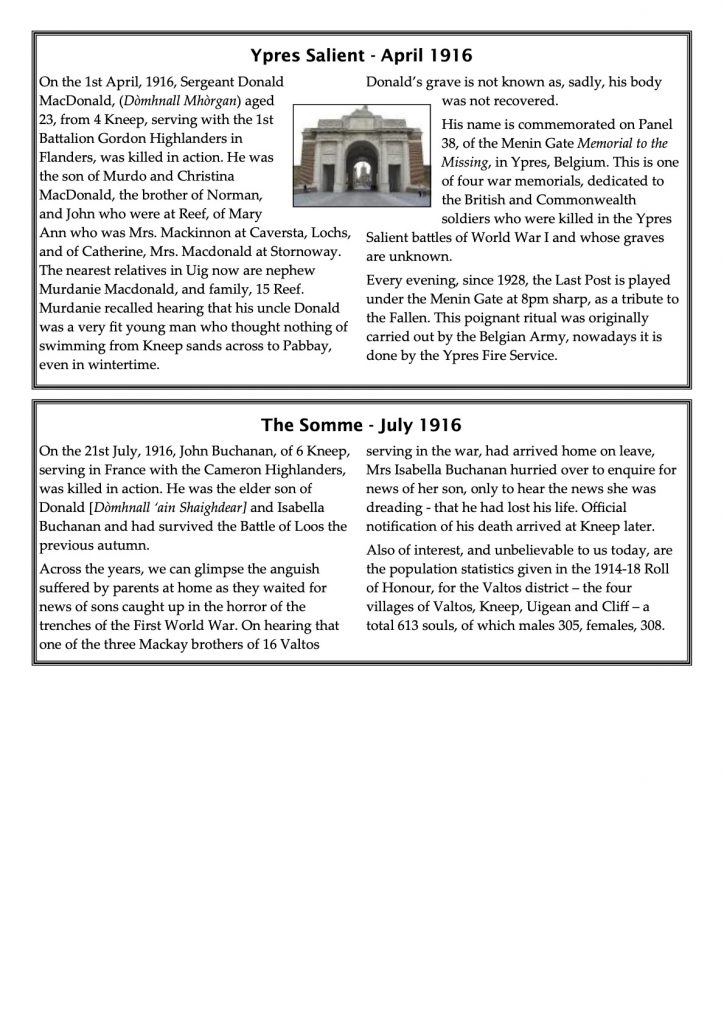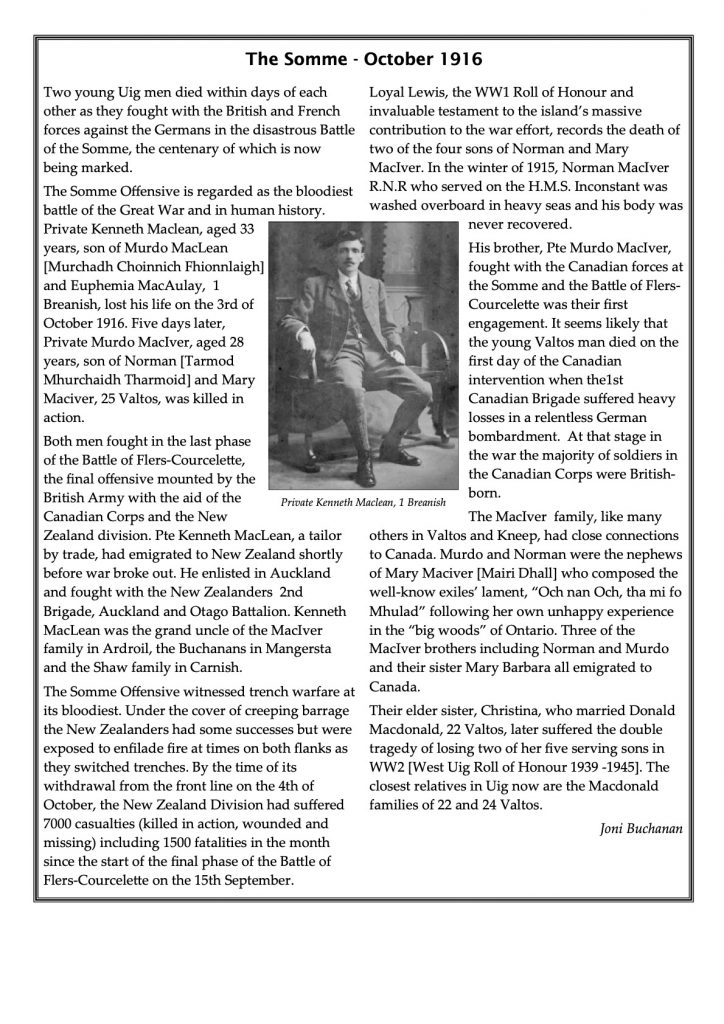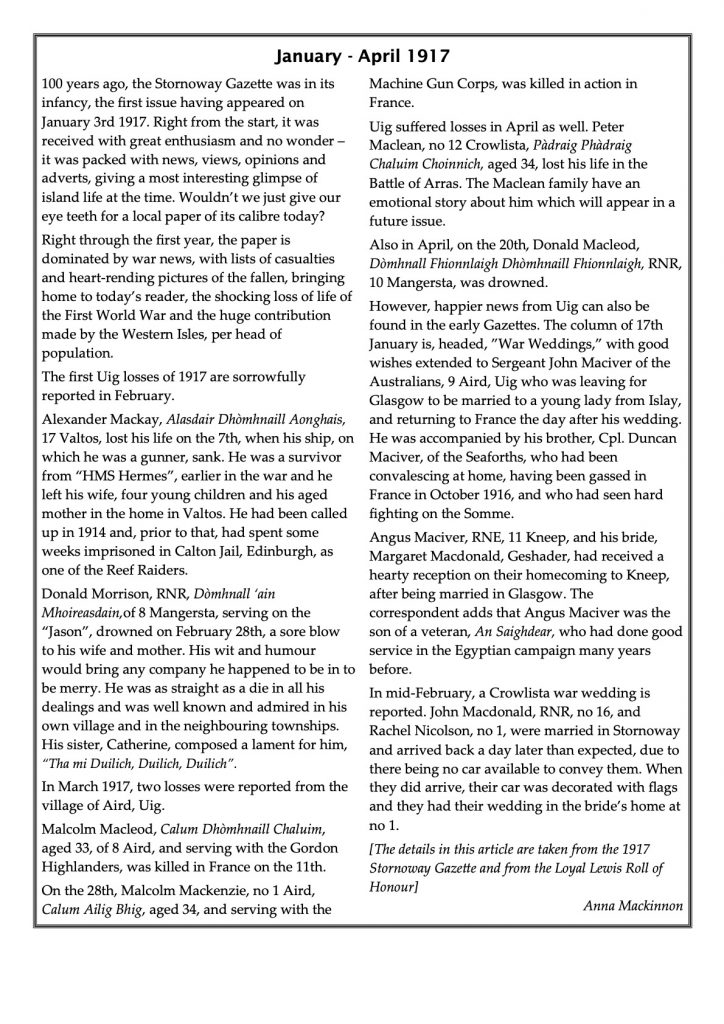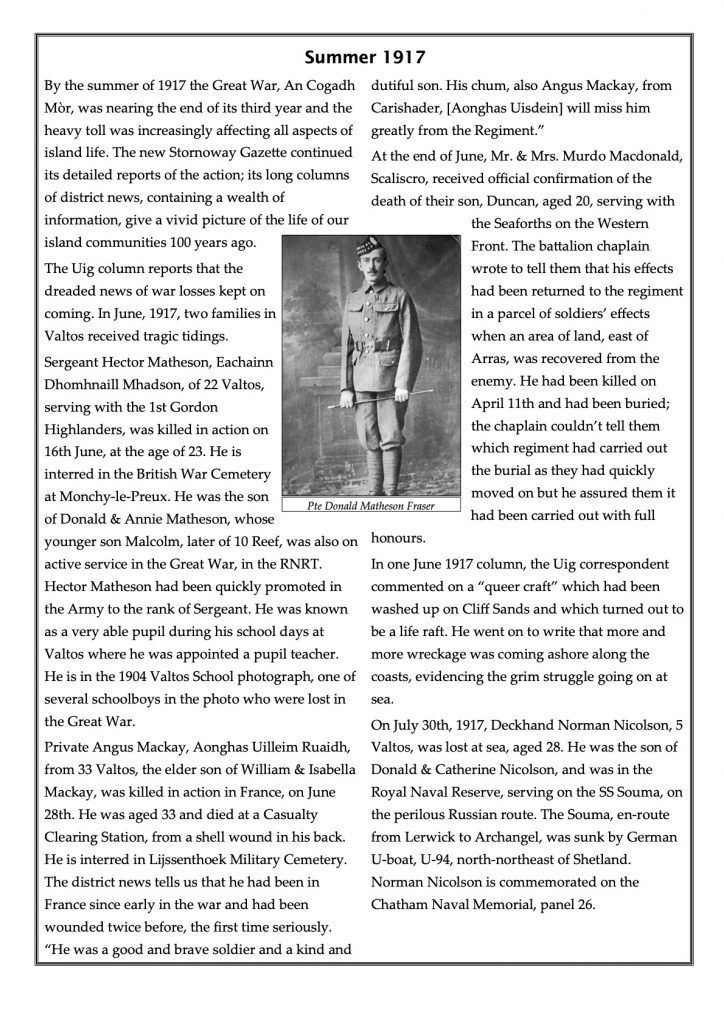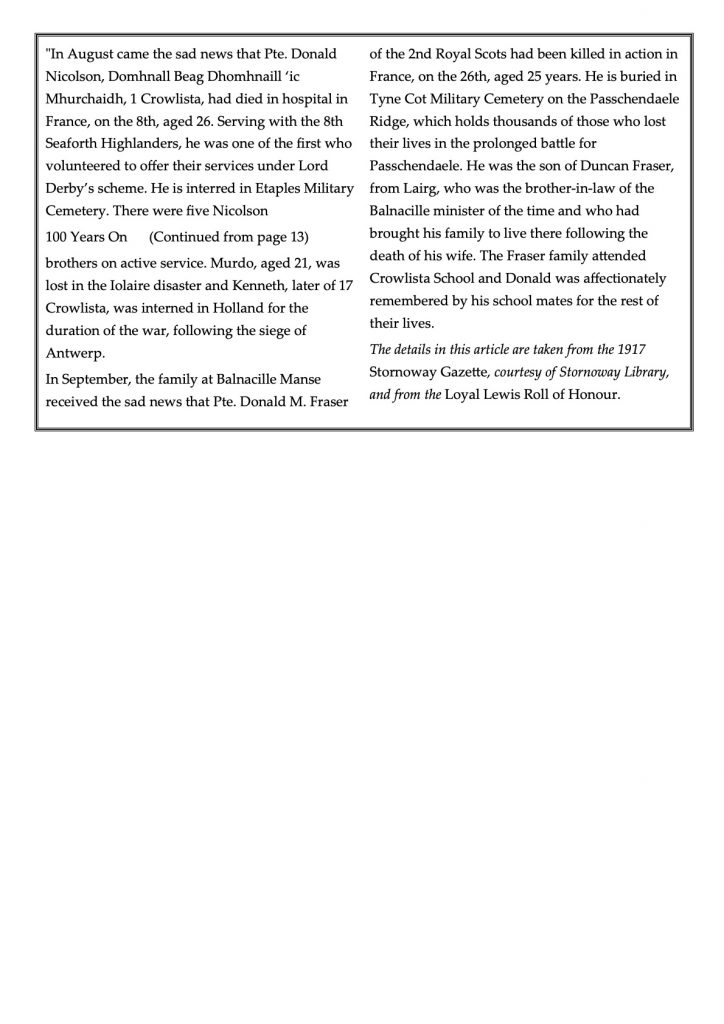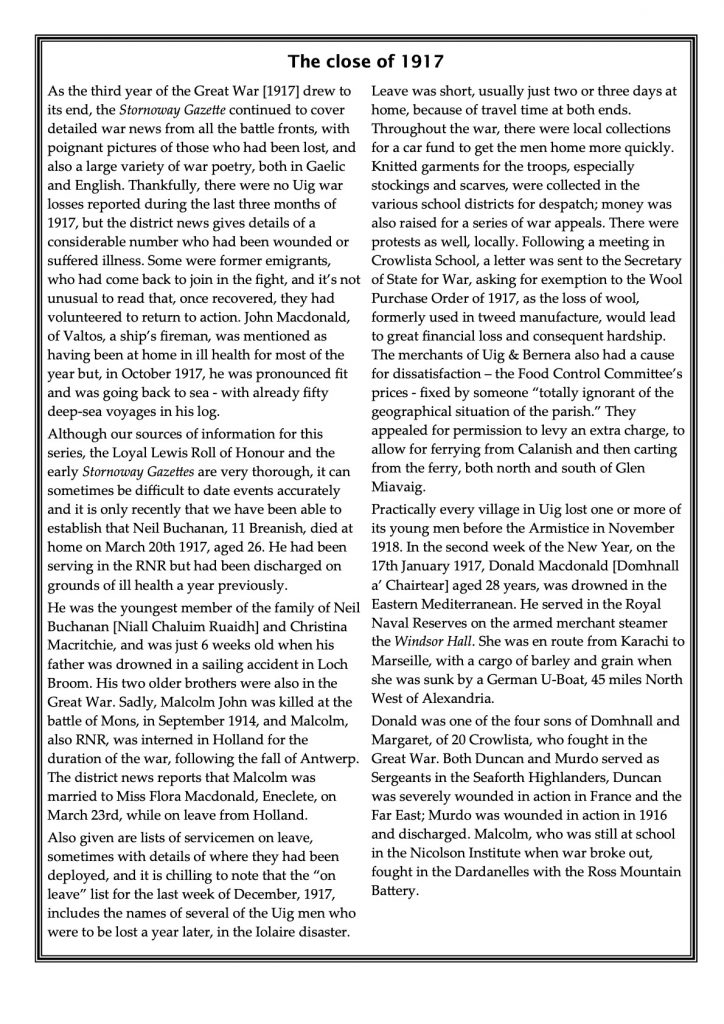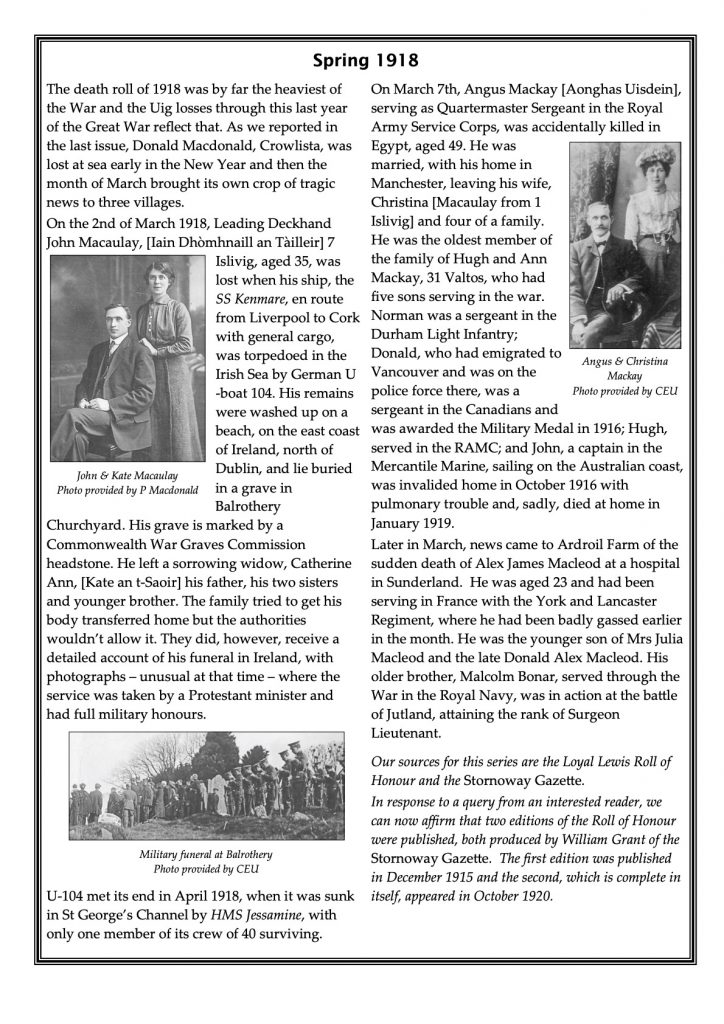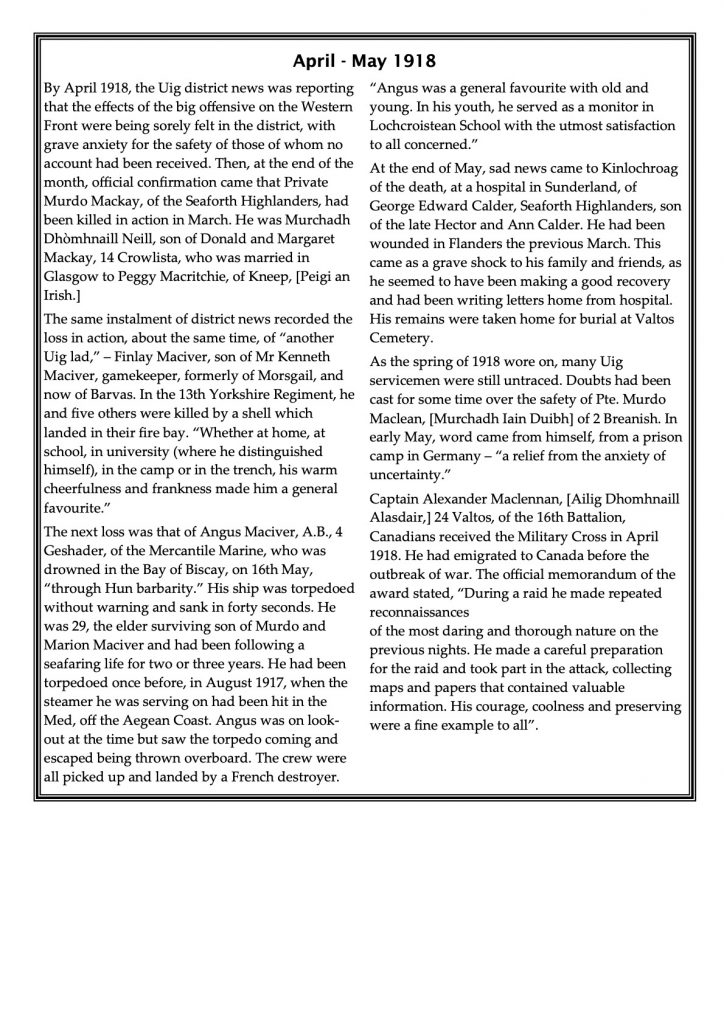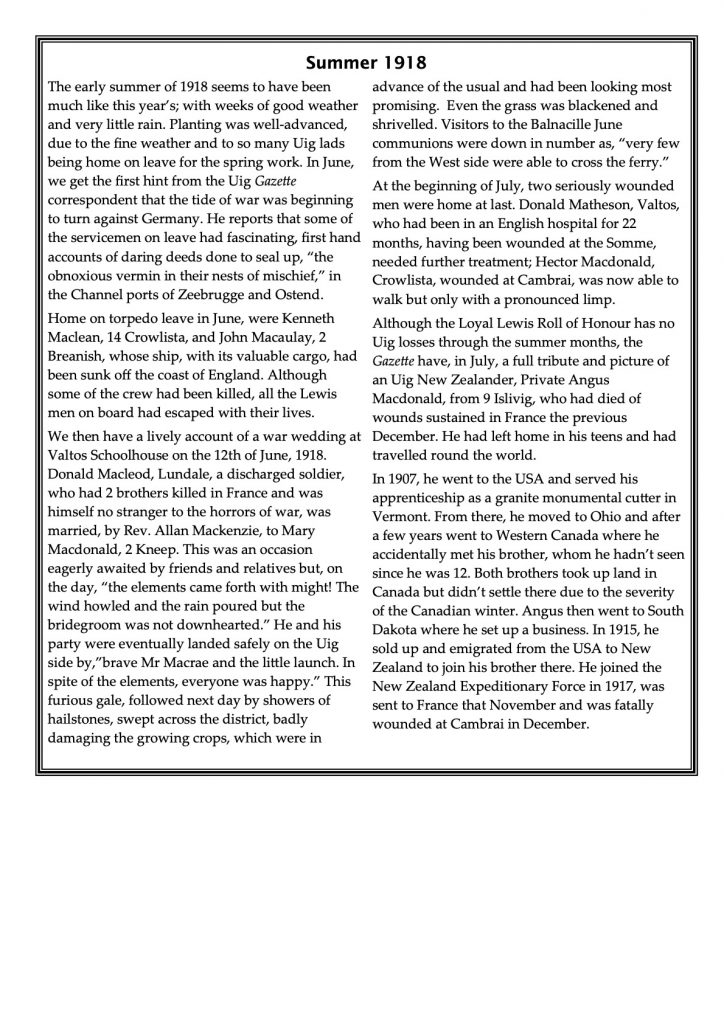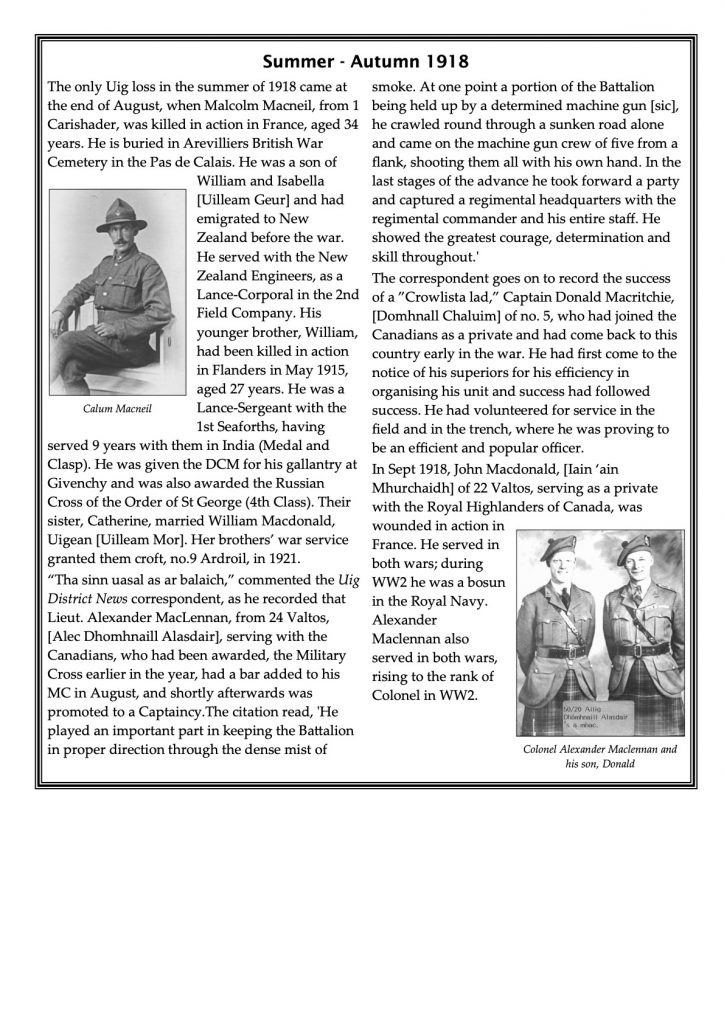Cogadh /War
Islanders were willing and active participants in the First and Second World Wars
We have a good quantity of information, particularly about individual soldiers and sailors. Here we have a list of the known Old Soldiers of the 78th Seaforth Highlanders. We also have a WW1 timeline in the museum.
WW1 Uig Losses
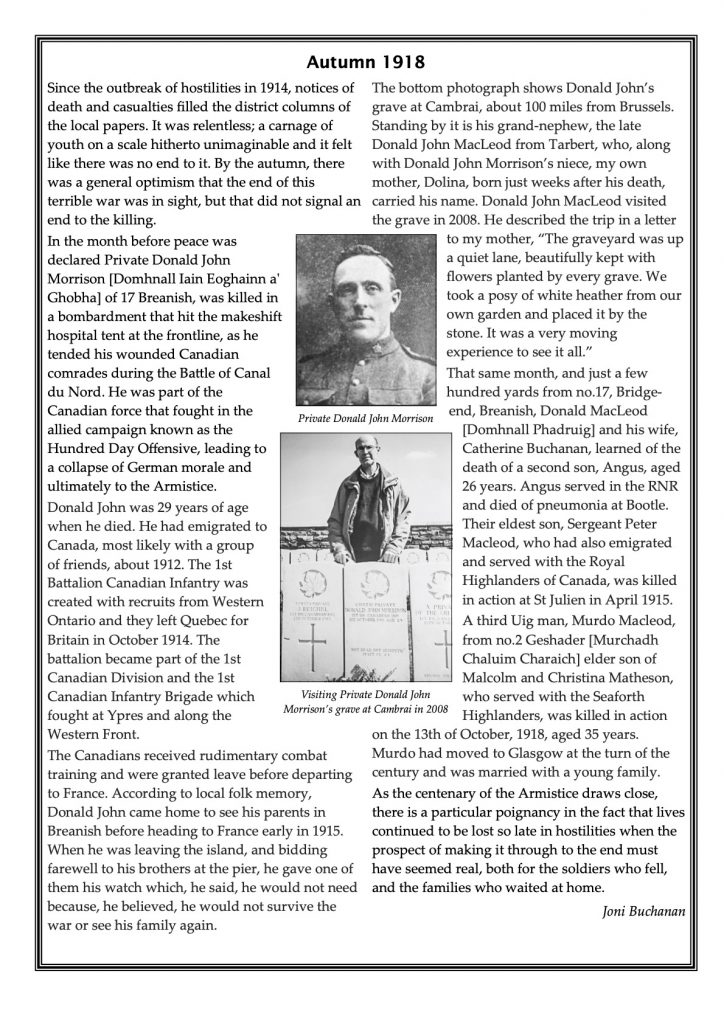
World War One
The Great War had a tremendous impact on the population of the Western Isles, despite its remoteness from the theatres of battle. On Sunday 2 August, 1914, virtually the whole able-bodied male population of Lewis was called to join up immediately; after their departure, on the following day, the island was never the same again.
The long absence of the workforce interrupted forever the traditional crofting and fishing patterns that had sustained the islands. Many never returned and a final, bitter blow was struck on 1 January 1919 when, with the sinking of the Iolaire, two hundred returning sailors were lost within sight of their homes. The men were all naval reservists coming home on New Year’s leave or demobbed from the Royal Navy apart from a few Mercantile Marine seamen.
In Scotland’s War Losses, Duncan Duff writes:
“The island of Lewis lost 1,151 men out of 6,712 serving. This was not an excessively high proportion of deaths from the number serving – a little more than 17 per cent – and in many Scottish districts in was exceeded. To realise the full significance of the figures, however, it must be remembered that, to an extent unknown in the industrial centres, practically every fit man in the island was early in the forces, or 6,712 out of a total population of 29,603 men, women and children. If the ratio of the killed to the total population be considered, the island paid twice as much as the rest of the kingdom in its sacrifice. What, indeed, had Lewis gained from its association with the Empire that it should be called on to pay so high a price? Though the above examples have been taken from the North, the South suffered no less, and in pastoral Tweeddale, the County of Peebles was, for its population, but a fraction behind Lewis in its war losses.”
The Iolaire Disaster
The Iolaire left Kyle of Lochalsh on 31 December 1918 for Stornoway, carrying naval reservists coming home on New Year’s leave or demobbed from the Royal Navy, apart from a few Mercantile Marine seamen. Early on the morning of 1 January 1919, approaching Stornoway in the dark, she struck the Beasts of Holm in the harbour and was wrecked, with the loss of some 205 lives.
Links
Iolaire (in Gaelic)
Faces from the Lewis War Memorial
The Seaforth Highlanders in 1914-1918
HMS Timbertown: Internment in Groningen
World War Two
Large numbers signed up in 1939 too, and the war also came to Lewis, with RAF and Radar stations in Uig, Ness, Point and at the aerodrome.
If you would like to leave a comment or get in touch with us…
You can visit our facebook page Uig Historical Society where we will be able to contact you. We have a great facebook family who are always happy to help with anything from dates, photographs and any information regarding Uig.


